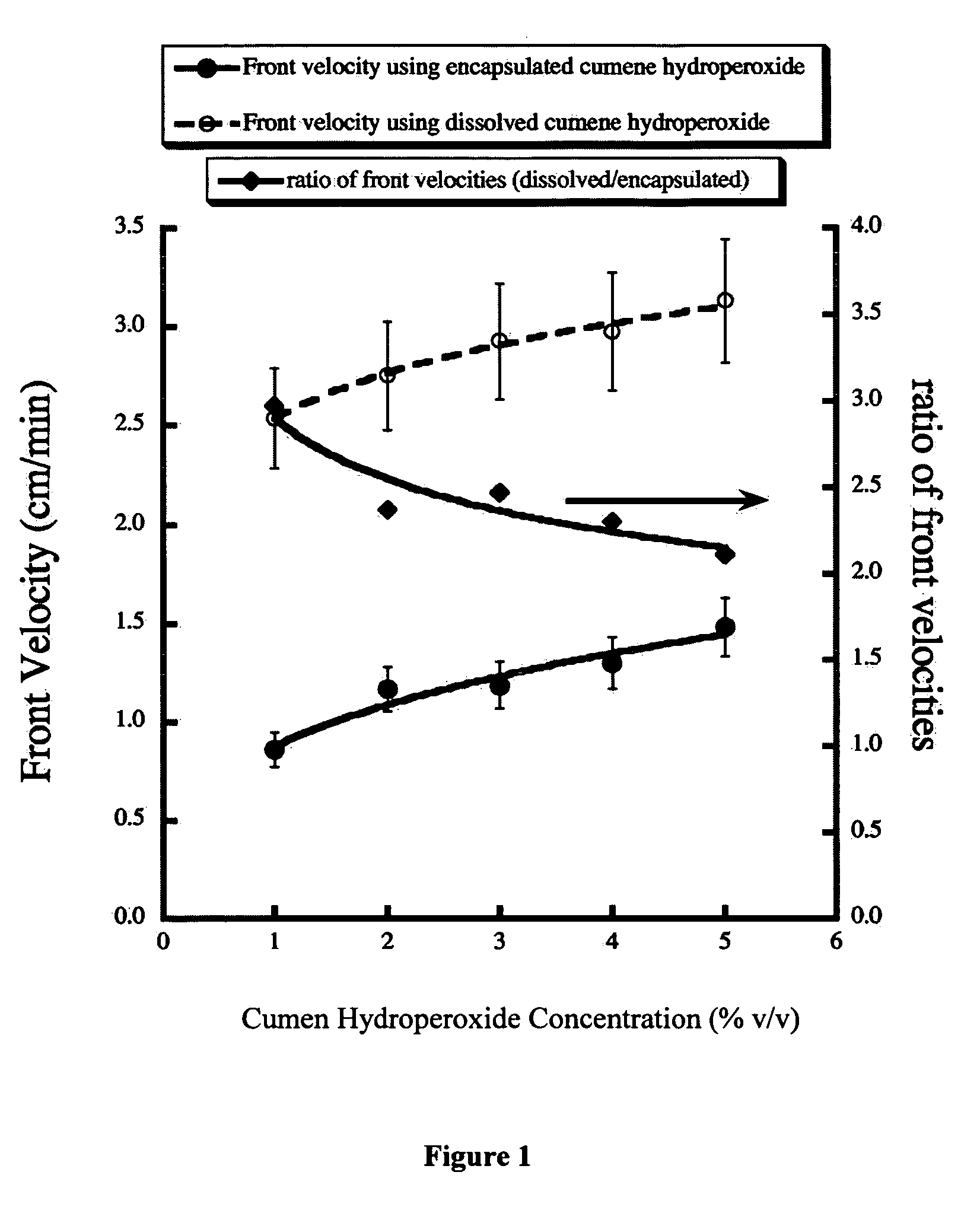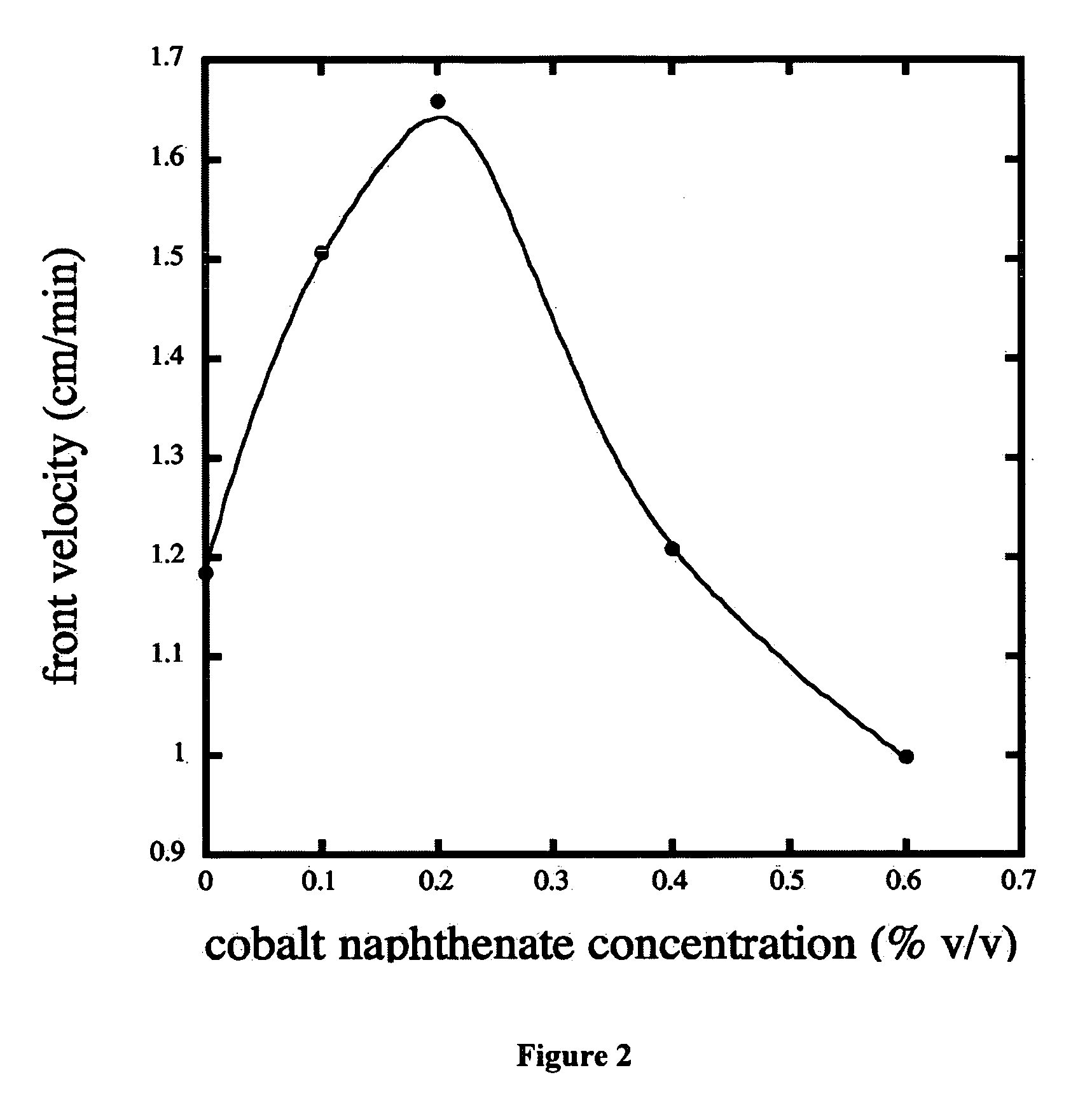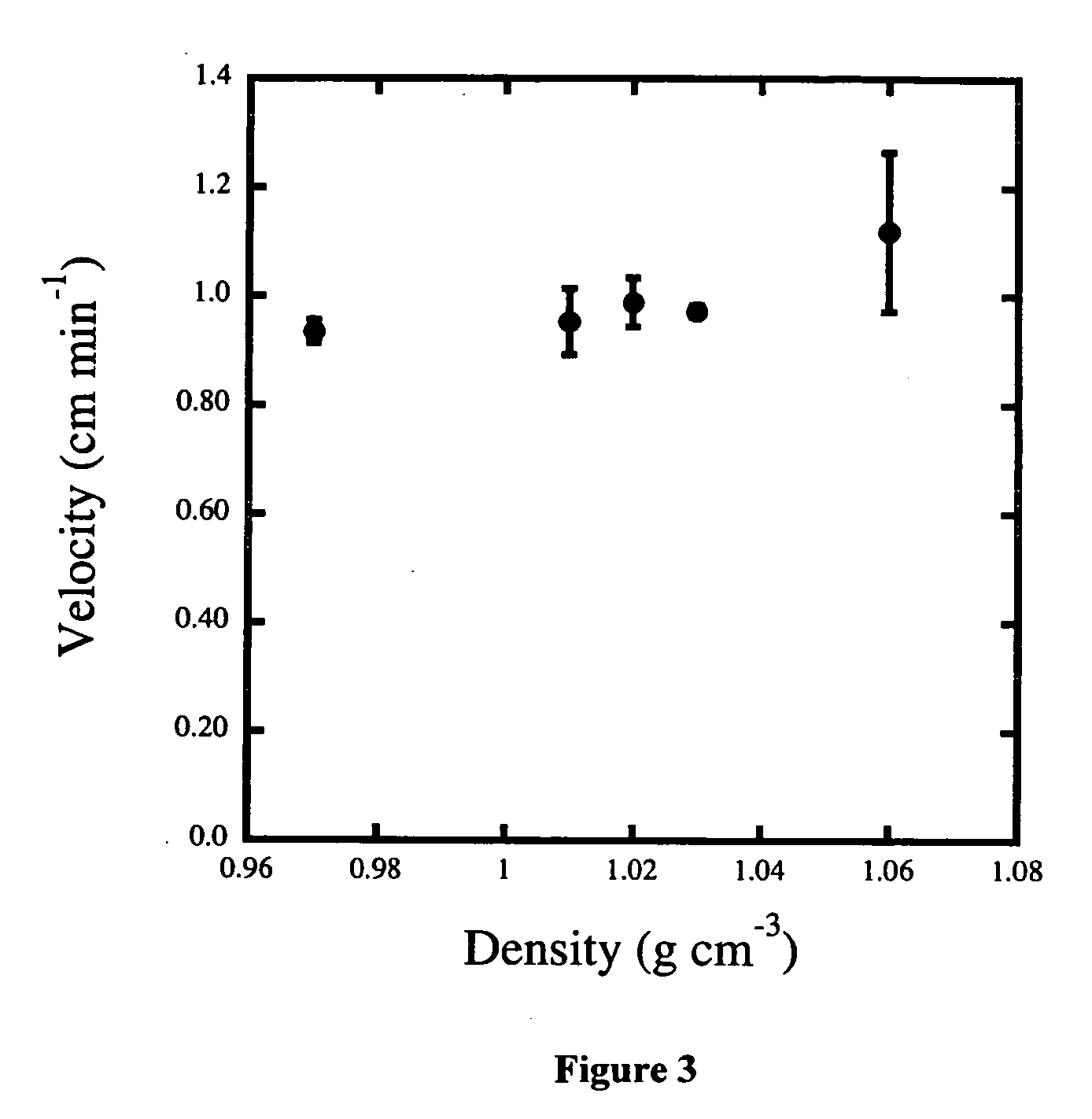Free-radical frontal polymerization with microencapsulated monomers and initiators
a technology initiators, which is applied in the field of free-radical frontal polymerization with microencapsulated monomers and initiators, can solve the problems of rendering them useless for their desired purpose, and achieve the effect of increasing the pot life of the system
- Summary
- Abstract
- Description
- Claims
- Application Information
AI Technical Summary
Benefits of technology
Problems solved by technology
Method used
Image
Examples
example 1
[0017] 1,6 hexanediol diacrylate (99%, technical grade) (HDDA) was obtained from UCB and used as received. Cumene hydroperoxide (88%) (CHP) and cobalt naphthenate in mineral spirits (8% cobalt) were obtained from Aldrich and used as received.
Microcapsule Preparation
[0018] Microcapsules loaded with a cumene hydroperoxide core were prepared using an interfacial polymerization method. The shell materials consisted of triethylenetetramine (TETA, 60%, technical grade) obtained from Aldrich and MONDUR MRS (a polymeric isocyanate based on 4,4′-diphenylmethane diisocyanate) obtained from Bayer Corporation and were used as received. Polyvinyl alcohol (87-89% hydrolyzed) (PVA) was obtained from Aldrich and used as received.
[0019] A solution of the core material was made by dissolving 80 mL of CHP in 10 mL of MONDUR MRS. The core solution was then emulsified in 250 mL of a 1.2% PVA solution with a stirring motor equipped with a 3-bladed propeller. The emulsion contained dispersed-core dropl...
example 2
[0027] 1,6 hexanedioldiacrylate (99%, technical grade) (HDDA) was obtained from UCB and used as received. Cumene hydroperoxide (88%) (CHP) was obtained from Aldrich and used as received.
Microcapsule Preparation
[0028] Microcapsules loaded with a cumene hydroperoxide core were prepared using an interfacial polymerization method. The shell materials consisted of triethylenetetramine (TETA, 60%, technical grade) obtained from Aldrich and MONDUR MRS (a polymeric isocyanate based on 4,4′-diphenylmethane diisocyanate) obtained from Bayer Corporation and were used as received. Polyvinyl alcohol (87-89% hydrolyzed) (PVA) was obtained from Aldrich and used as received.
[0029] A solution of the core material was made by dissolving 80 mL of CHP in 10 mL of MONDUR MRS. The core solution was then emulsified in 250 mL of a 1.2% PVA solution with a stir 5 motor equipped with a 3-bladed propeller. The emulsion contained dispersed-core droplets with a size ranging from 100-275 microns, which was ac...
PUM
| Property | Measurement | Unit |
|---|---|---|
| size | aaaaa | aaaaa |
| size | aaaaa | aaaaa |
| storage time | aaaaa | aaaaa |
Abstract
Description
Claims
Application Information
 Login to View More
Login to View More - R&D
- Intellectual Property
- Life Sciences
- Materials
- Tech Scout
- Unparalleled Data Quality
- Higher Quality Content
- 60% Fewer Hallucinations
Browse by: Latest US Patents, China's latest patents, Technical Efficacy Thesaurus, Application Domain, Technology Topic, Popular Technical Reports.
© 2025 PatSnap. All rights reserved.Legal|Privacy policy|Modern Slavery Act Transparency Statement|Sitemap|About US| Contact US: help@patsnap.com



